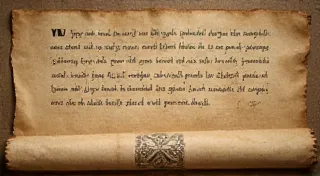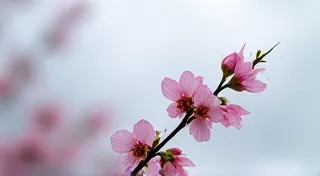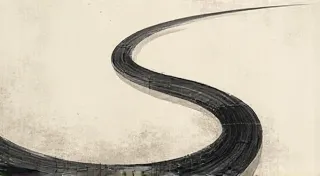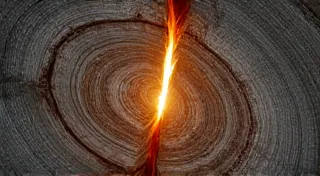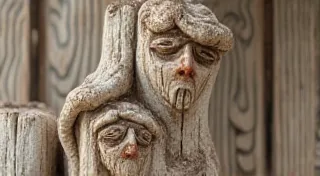Shadows of Intent: The Subtleties of Registration in Mokuhanga
The scent of persimmon sumi hangs heavy in the air, a comforting presence that has permeated studios for centuries. When I first began learning Mokuhanga, Japanese woodblock printing, I obsessed over registration. The crisp, clean edges of a print, the perfect alignment of colors—it felt like the ultimate measure of skill. I spent hours painstakingly marking my blocks, using the same precise movements, chasing an elusive ideal of absolute accuracy. And for a time, I thought I was achieving it. But the prints I created felt…sterile. They lacked a certain life, a soul.
My sensei, a quiet, observant man named Kenzo, noticed. He didn't scold or criticize. He simply pointed to a print by Hiroshige, a master of the Edo period. "Look," he said, his voice barely a whisper, "see how the blues don't quite meet the greens? It's not a mistake. It's a breath." That moment shifted my entire understanding of Mokuhanga.
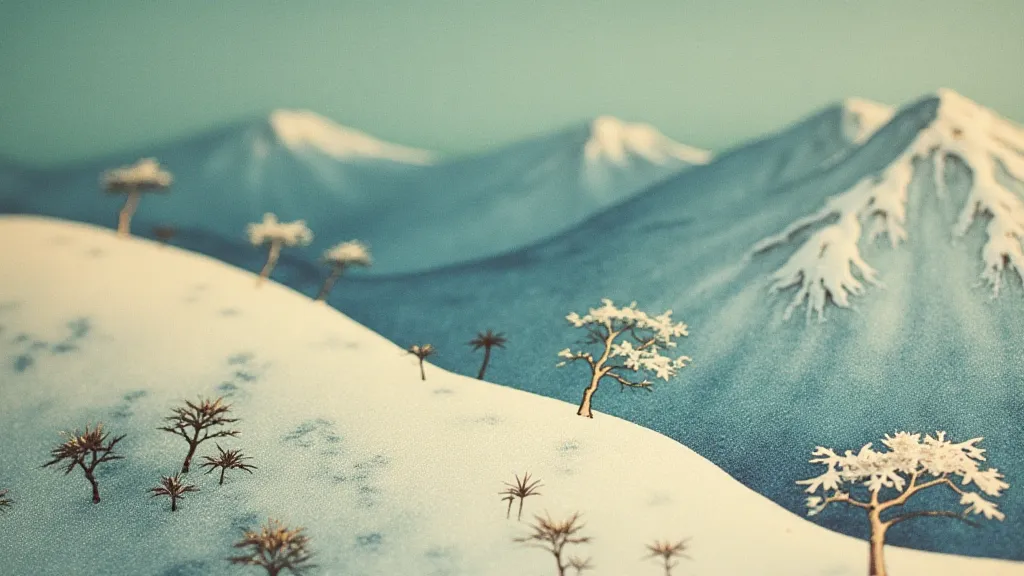
A Dance of Imperfection: History and Philosophy
The pursuit of perfect registration in Mokuhanga isn’t a modern fixation. Historically, it arose from the practicalities of the printing process. Traditionally, Mokuhanga prints were produced not by a single artist, but by a collaborative effort—the artist designing the image, the carver meticulously transferring and cutting the design into the woodblocks, and the printer carefully applying the color. This division of labor meant that achieving absolute precision across multiple blocks was incredibly challenging. The evolution of this process and its broader cultural context are rich and fascinating subjects, and exploring Echoes of the Past: Tracing Mokuhanga’s Historical Threads can offer a deeper understanding.
Furthermore, the aesthetics of the Edo period, and the broader cultural values of Japan, favored a certain degree of asymmetry and imperfection—*wabi-sabi* – finding beauty in transience and imperfection. These inherent characteristics were deliberately incorporated into the final prints, lending them a distinctive character and a connection to the natural world. The slight shifts in color, the subtle variations in line, they weren't flaws; they were whispers of the hand, echoes of the process.
Imagine the bustling workshops of Edo-period Japan. The rhythmic tapping of hammers, the murmur of conversation, the occasional sigh of frustration when a block shifted slightly. These are the intangible elements that contribute to the essence of a Mokuhanga print. To strive for absolute registration is to erase these vital elements, to create a sterile imitation of a living tradition.
Beyond Accuracy: The Intentional Shift
So how do you move beyond the obsession with perfect alignment? It begins with a shift in perspective. Instead of viewing slight misregistration as an error to be corrected, you begin to see it as a tool—a way to add depth, atmosphere, and a sense of movement to your prints. Think about how the overlapping of colors can soften edges, create a hazy effect, or suggest the blurring of distance. A subtle shift in blue can transform a solid form into a shimmering reflection on water. A slight misalignment of a red layer can suggest the warmth of a setting sun. The careful orchestration of color and its impact on the overall feeling of a print is a crucial element that goes beyond simple registration. Delving into Chromatic Resonance: The Palette as Portal to Atmosphere in Mokuhanga reveals the nuance of color interplay in Mokuhanga.
I began experimenting. I would intentionally introduce slight variations in my registration, paying close attention to the effect they produced. I started to see that the 'imperfection' wasn't about random chaos; it was about deliberate nuance. A tiny shift might create the illusion of moisture on a leaf, or suggest the movement of clouds across the sky. It wasn’t about making *mistakes*; it was about making *choices*.
My sensei would often say, “The wood speaks to you. Listen to its voice.” It sounds a bit mystical, I know, but there’s a truth to it. Each woodblock is unique; the grain patterns, the density, the slight imperfections of the wood itself all influence the printing process. The characteristics of the wood itself have an enormous impact on the final result. Understanding how to select the right wood, and work *with* its inherent qualities, is an essential skill. Learning more about The Whispering Grain: Revealing Character Through Wood Selection in Mokuhanga can help you appreciate this critical aspect of the craft.
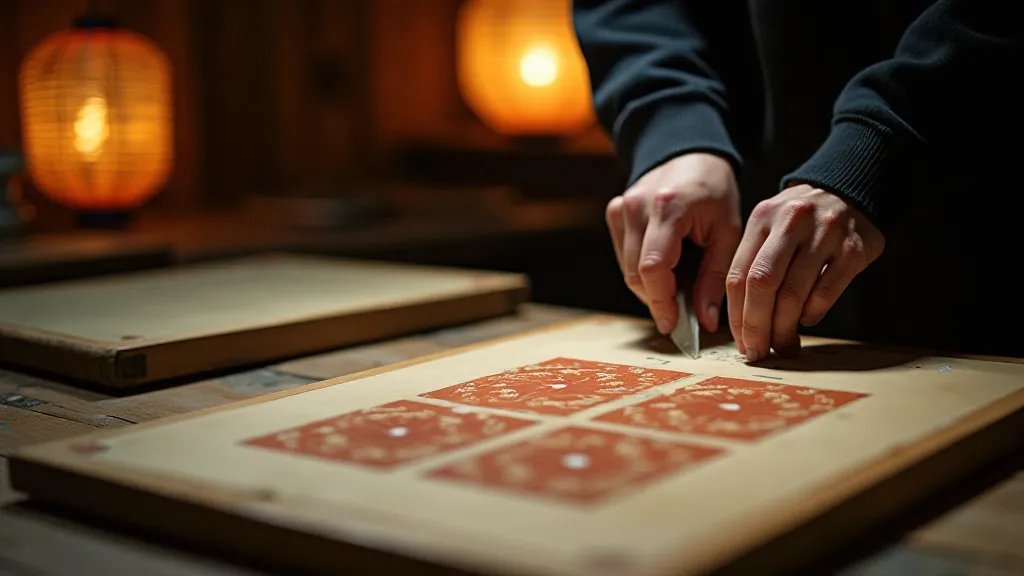
Collecting and Restoration: Recognizing the ‘Breath’
Understanding the subtleties of registration isn't just valuable for the printer; it's also crucial for collectors and those involved in the restoration of antique Mokuhanga prints. Many early collectors, especially those influenced by Western ideals of perfect reproduction, dismissed prints with noticeable misregistration as inferior. However, today, a more sophisticated understanding is emerging, recognizing that these seemingly 'flaws' are often integral to the print’s character and historical significance. This shift in perspective also speaks to the collaborative nature of traditional Mokuhanga practices.
When examining an antique print, look beyond the surface. Consider the printing techniques of the time, the collaborative nature of the process, and the aesthetic values of the Edo period. A print with slight misregistration is not necessarily a damaged or poorly executed piece; it's a testament to the hands that created it, a window into the past. The understanding and appreciation of this collaborative process is key.
Restorers, too, must approach antique Mokuhanga with sensitivity. Aggressively correcting perceived registration errors can strip a print of its authenticity and historical context. It’s often better to stabilize the print and preserve the existing characteristics, rather than attempting to 'perfect' it. It’s important to recognize that Mokuhanga prints are rarely the product of a single individual, and a degree of variation is expected and often desirable.
Finding Your Voice: The Ongoing Journey
The journey of learning Mokuhanga is a lifelong pursuit, a constant refinement of technique and understanding. The obsession with perfect registration was a necessary step in my own development—it taught me the fundamentals. But ultimately, it was the willingness to embrace imperfection, to listen to the wood and the paper and the ink, that allowed me to find my own voice as a printmaker. The interconnectedness of the various aspects of Mokuhanga—the wood, the ink, the paper, the collaboration—creates a unique and rewarding artistic experience.
Don't be afraid to experiment. Embrace the 'breath' that lies between the colors, the subtle shifts that breathe life into your prints. Remember that Mokuhanga is not just about technical skill; it’s about connection—a connection to the past, to the materials, and to the art of expression. And sometimes, the most beautiful moments happen not when you’re striving for perfection, but when you’re allowing the unexpected to unfold.

The creation of Mokuhanga prints is an act of cultural transmission, a conversation across generations. Understanding the importance of these collaborative practices and appreciating the nuances of the printing process deepens the connection to this rich artistic heritage. Reflecting on the Silent Dialogue: Collaboration and Community in Mokuhanga showcases the beautiful way these traditional processes have been passed down through time.
The study of Mokuhanga is far more than just the technical skills needed to produce a woodblock print. It's a journey into a philosophy, an appreciation for cultural heritage, and a continuous learning process. This constant refinement, coupled with a willingness to embrace imperfection, leads to a deeper understanding and connection with this beautiful and complex art form.
